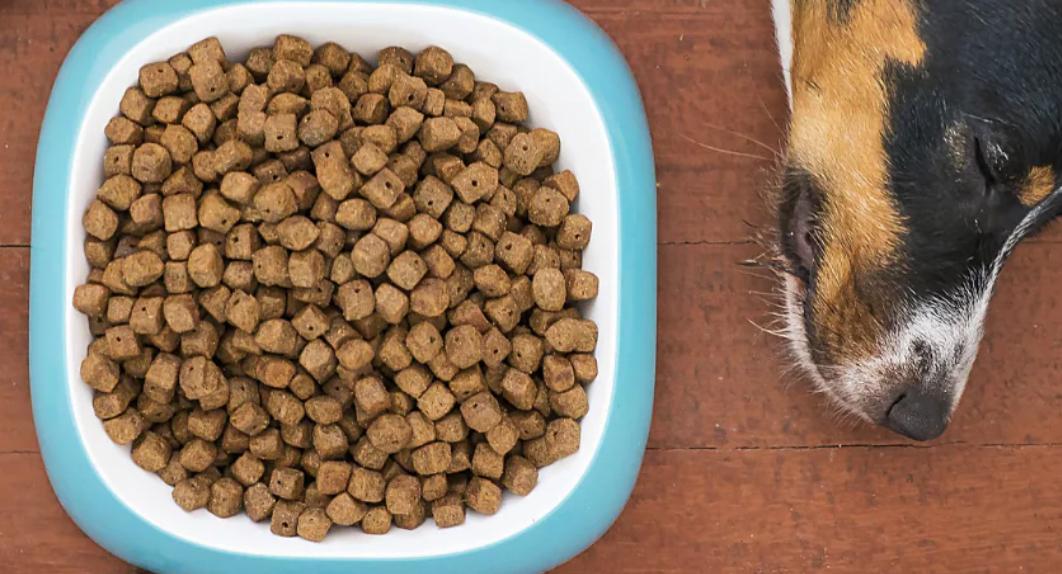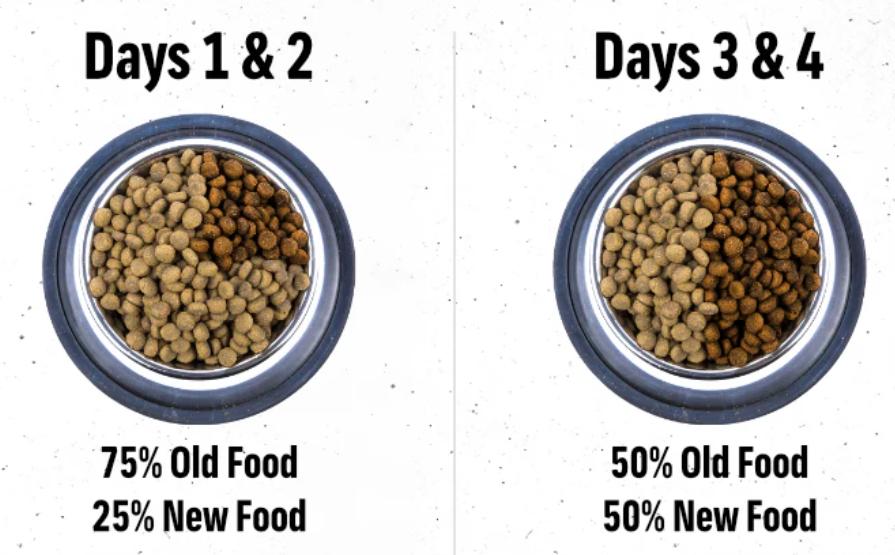Transitioning your dog’s food requires careful planning and patience. A sudden change can upset your pet’s digestive system, leading to discomfort and potential health issues. This guide will walk you through the essential steps on how to transition dog food safely, ensuring your dog remains healthy and happy throughout the process. Whether you’re switching brands, moving to a new formula, or addressing specific dietary needs, a gradual transition is key to success. Let’s explore why it’s important to take this process slowly and how to make the switch as smooth as possible for your furry friend.

Why Is It Important to Transition Dog Food Gradually?
Understanding Your Dog’s Digestive System
Dogs have sensitive digestive systems that can easily become upset by sudden changes in their diet. Their stomachs produce specific enzymes to break down the food they’re accustomed to. When you introduce new food abruptly, their digestive system doesn’t have time to adjust, leading to issues like diarrhea, vomiting, or loss of appetite. Understanding how your dog’s digestive system works is crucial to ensuring a smooth transition. This knowledge will help you prevent discomfort and maintain your pet’s overall health during the change.
Risks of Sudden Dog Food Changes
Switching your dog’s food too quickly can lead to several health problems. The most common issue is gastrointestinal distress, which includes symptoms like diarrhea, gas, and vomiting. These issues arise because your dog’s digestive system isn’t prepared to handle the new food. Additionally, a sudden change can lead to food rejection, where your dog refuses to eat the new diet altogether. This can result in nutritional deficiencies and a weakened immune system, making your pet more susceptible to illnesses.
Benefits of a Slow Transition
A gradual transition allows your dog’s digestive system to adapt to the new food, reducing the risk of gastrointestinal issues. By slowly mixing the new food with the old, you give your dog time to adjust to the different ingredients, ensuring they accept and digest the new diet comfortably. This method not only prevents digestive upset but also encourages your dog to develop a positive association with the new food, leading to better long-term health and satisfaction.
How to Transition Dog Food: A Step-by-Step Guide
Day 1-3: Introducing the New Food
Start by mixing a small portion of the new food with your dog’s current diet. Aim for a ratio of about 25% new food to 75% old food. Observe your dog closely for any signs of digestive discomfort, such as changes in stool consistency or appetite. During these first few days, your goal is to introduce the new food gently, allowing your dog’s digestive system to begin adjusting to the new ingredients. This cautious approach helps ensure that your dog starts the transition on a positive note, minimizing the risk of upset.

Day 4-6: Increasing the New Food Amount
As your dog begins to tolerate the new food, gradually increase the proportion. Adjust the mixture to about 50% new food and 50% old food. Continue to monitor your dog for any signs of digestive distress. If your dog seems to be adjusting well, this stage will help further acclimate their digestive system to the new food. However, if any issues arise, you may need to slow the transition process or consult with your veterinarian for additional guidance.
Day 7-10: Completing the Transition
In the final days of the transition, increase the new food portion to 75% while reducing the old food to 25%. By day 10, your dog should be fully transitioned to the new diet. Continue to observe your dog’s digestion and overall health. If the transition has gone smoothly, your dog should now be comfortable with the new food, experiencing no adverse effects. A successful transition means your dog can enjoy the new diet while maintaining good digestive health.
Common Mistakes to Avoid When Transitioning Dog Food
Rushing the Process
One of the most common mistakes is rushing the transition process. Pet owners often feel pressured to switch foods quickly, especially if the current food is no longer available or suitable. However, speeding through the transition can lead to digestive upset and food rejection. It’s essential to follow a slow, methodical approach, even if it takes longer than anticipated. Patience is key to ensuring your dog’s health and well-being during the transition.
Ignoring Your Dog’s Reactions
Ignoring your dog’s reactions to the new food can result in ongoing digestive issues. Pay close attention to changes in their stool, appetite, and energy levels. If you notice any adverse reactions, it may be necessary to slow the transition or consult a veterinarian. Your dog’s behavior is a critical indicator of how well they’re adjusting to the new food. Responding to these signals can prevent long-term health problems and ensure a successful transition.
Mixing Incompatible Dog Foods
Mixing foods with vastly different ingredients or nutritional profiles can cause digestive issues. It’s essential to choose a new food that complements the old one in terms of ingredients and nutrition. If the foods are too different, your dog’s digestive system may struggle to process them together. Researching and selecting compatible foods can help avoid digestive distress and make the transition smoother. Consult with a veterinarian if you’re unsure which foods are best suited for a gradual switch.
How to Handle Transitioning Dog Food for Picky Eaters
Gradual Introduction Techniques
For picky eaters, introducing new food can be especially challenging. Start by mixing the new food with their favorite treats or adding a small amount of a tasty topper to the new food. This gradual introduction helps mask the unfamiliar taste and encourages your dog to try the new food. Over time, reduce the amount of the topper or treats until your dog is eating the new food on its own. This method can make the transition smoother and more appealing to picky eaters.
Flavor Enhancement Tips
Enhancing the flavor of the new food can entice picky eaters to accept the change. Consider adding a bit of warm water or low-sodium broth to the food to release its aroma and make it more appetizing. You can also mix in a small amount of wet food or a flavorful supplement designed for dogs. These enhancements can make the new food more palatable and help your dog embrace the transition with less resistance.
When to Consult a Vet
If your picky eater continues to resist the new food despite gradual introduction and flavor enhancements, it may be time to consult a veterinarian. They can provide advice on alternative foods or identify any underlying health issues that might be affecting your dog’s appetite. A vet can also recommend specialized diets that cater to your dog’s specific preferences and nutritional needs, ensuring that the transition is both healthy and successful.
Conclusion
Transitioning dog food safely is a crucial process that requires patience and attention to detail. Understanding how to transition dog food properly can ensure your dog’s digestive health and overall well-being during the switch. Remember to observe your dog closely, avoid common mistakes, and make adjustments as needed. Whether your dog is a picky eater or has a sensitive stomach, the steps outlined in this guide will help you manage the transition effectively. With the right approach, you can successfully introduce new food without causing unnecessary stress or health issues for your pet.
FAQ
How long should it take to transition dog food?
A proper transition should take about 7-10 days. This gradual process allows your dog’s digestive system to adjust to the new food, reducing the risk of gastrointestinal issues.
What if my dog refuses the new food during the transition?
If your dog refuses the new food, try introducing it more slowly or mixing it with their favorite treats. If resistance continues, consult your vet for advice on alternative options.
Can I mix wet and dry food during the transition?
Yes, you can mix wet and dry food during the transition. This can help enhance the flavor and texture of the new food, making it more appealing to your dog while ensuring a smooth switch.
